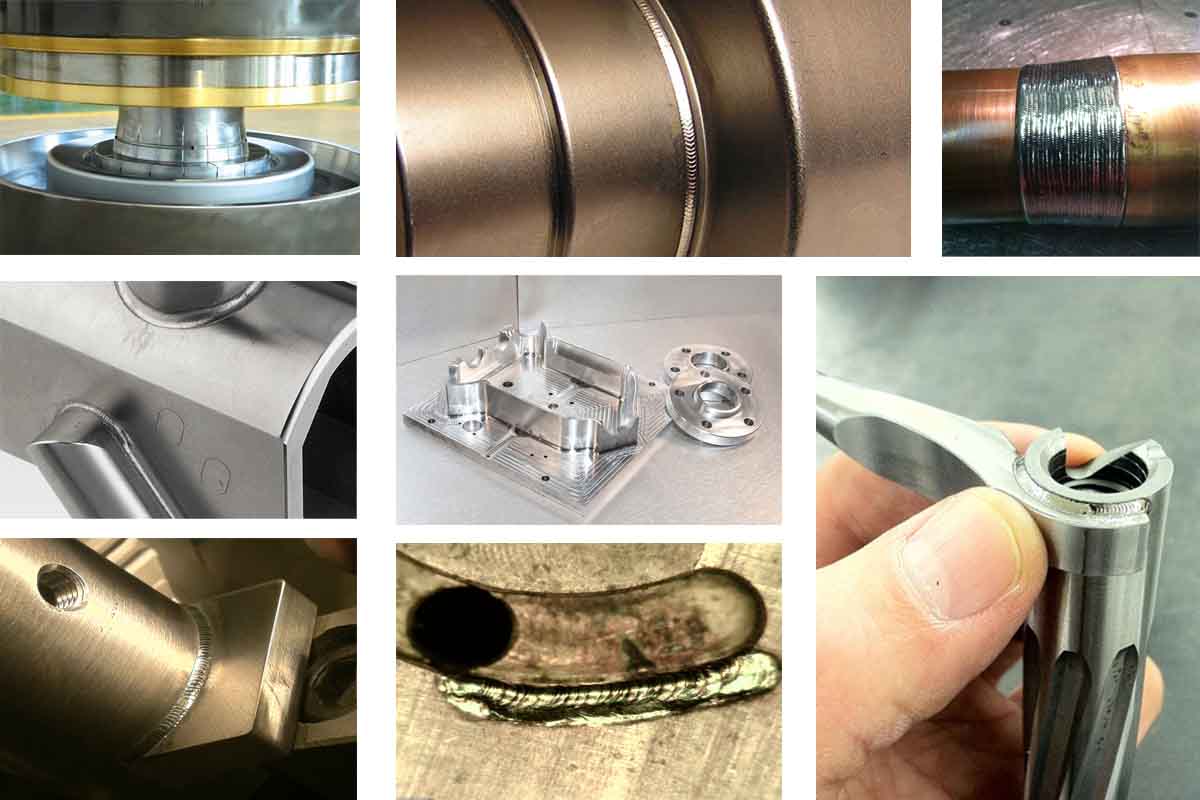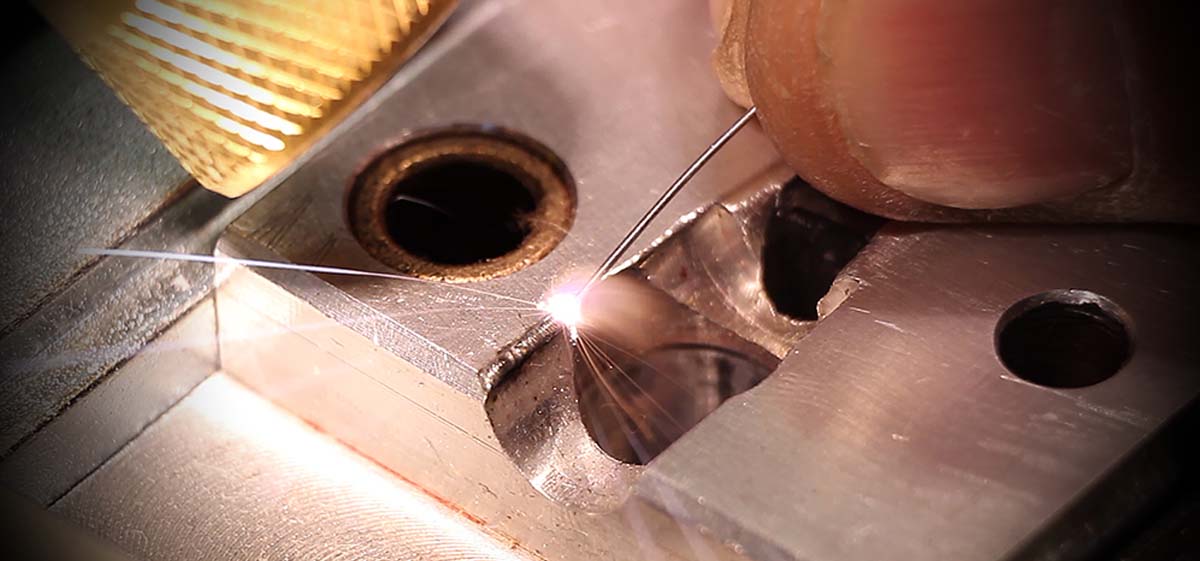Have you ever thought about how new tech might offer more than just cost savings? Based on my experience, mold welding machines are a prime example. They speed up repairs significantly. They also help cut down material waste and lower energy use. I believe they keep production running smoothly, too. Many manufacturers I know praise these upgrades. Yet, there’s one big challenge most people don’t talk about…
Advantage of Mold Welding Machines
Mold welding machines provide precise repairs, faster turnaround, and longer mold lifespans. They reduce heat distortion and work with various materials, improving efficiency and cutting costs.
Longer Mold Life and Fewer Repairs
Mold welding machines extend the lifespan of molds by enabling precise repairs in specific areas, strengthening the affected parts and maintaining the mold’s integrity. This reduces the need for frequent repairs, saving both time and costs. By minimizing stress on critical areas, these machines ensure more reliable and durable mold performance.
Data Shows How Mold Life Increases
High-precision mold repairs like micro-TIG welding cause less heat damage, keeping the mold strong. Though they cost 20–30% more, they’re worth it for critical molds. Adding Titanium Nitride (TiN) coating after repair can cut wear by 30%, reducing downtime. With good welding, high-end molds can reach 1.1 million cycles, and even mid- or low-end molds can last much longer.
Real-World Examples and What the Industry Says
- An H13 steel mold can produce over 1 million parts if repaired well with advanced welding like micro-TIG or laser welding. I believe this reliability is a standard in areas like automotive, medical, and high-precision manufacturing.
- Advanced welding techniques restore complex mold details. They ensure quality even when making many parts. This means longer times between maintenance and less unexpected downtime.
To sum up, using mold welding machines is key, in my opinion. It maximizes mold life, cuts maintenance costs, and keeps production running more steadily.
Working With Many Mold Materials
Mold laser welders work well with many different mold materials. From my experience, this flexibility is really important for today’s mold repair and making.
Works With Many Mold Steels and Alloys
These machines can weld a wide range of mold materials, including tool steels like H13 and P20, which are common in injection molds and die-casting dies. They also work well with stainless steel, carbide, and non-ferrous alloys, consistently delivering high-quality results, making them ideal for shops handling varied mold materials.
Adapts to Different Mold Sizes and Shapes
- Take the MaxWave MW-QW200, for example. It has a five-axis structure. This lets it handle more welding angles. I find it reaches tricky or uneven mold surfaces accurately.
- Laser welders like the G5-2000WCMR work with many mold sizes. You can get an optional boom arm. This makes working on very large tools much easier. I think this adds great flexibility for different mold shapes.
So, what’s the takeaway? Mold welding machines are truly flexible with different materials and sizes. Based on my experience, they consistently produce strong, high-quality welds on many kinds of molds. This flexibility makes them a must-have tool. I recommend them for any mold repair shop or factory dealing with various materials and tricky shapes.
High Output and Consistency in Mold Welding Machines
I find that mold welding machines offer high output and very consistent results. These are two main benefits that make them better than older ways of repairing and making things.
Faster Production with Increased Welding Speed
Modern mold welding machines like high-frequency and QCW lasers enable rapid bonding with minimal pre-heating or cooldown, reducing downtime and speeding up jobs. They also support continuous operation, allowing production lines to run smoothly with fewer interruptions—an advantage when meeting high demand.
Reliable Precision for Repeatable Quality
- Semi-Automatic Control: Many models have features that help automate some of the work. I believe this cuts down on mistakes by the operator. It also makes each weld more consistent. This means you get the same good results for all items in a batch.
- Advanced Motion Systems: With five-axis control, technicians can weld tricky angles and uneven surfaces very precisely.
- Adjustable Parameters: Operators can adjust settings like axis speeds, laser power, and how often the weld happens. I find this helps get the precise weld shape required for different molds or materials.
Consistency in Finished Quality
- Uniform Heat Application: Heat goes precisely where it’s needed. This makes seams strong and even. It also doesn’t harm nearby parts.
- Lower Heat-Affected Zones: Using less heat protects the main material of the mold. In my experience, this means fewer fixes are needed after welding. It also helps maintain high product quality.
- Integrated Software Controls: Smart software ensures each weld meets tough quality standards. I suggest this helps keep the process steady and ensures quality every time.
In my experience, mold welding machines greatly increase productivity and provide very consistent results. I believe they are essential for any manufacturer who needs dependable, repeatable outcomes on a large scale.
Better for the Environment and Workers
In my view, mold laser welders are a big step up from older welding methods. They offer real benefits for the environment and for worker safety.
How Mold Welding Machines Help the Environment
Modern mold welding machines like the Fronius TPS/i produce less metal fumes, lower energy consumption, and a smaller carbon footprint. Compared to traditional welding methods, they significantly reduce harmful particle emissions and greenhouse gases. With less shielding gas required, they offer a cleaner, more eco-friendly manufacturing process.
Modern mold welding methods significantly reduce material waste—by up to 45%—compared to traditional machining or forging, and they also lessen the environmental impact by reducing the need for extra tooling, cutting both emissions and scrap.
How I See Mold Welding Machines Cutting Labor Costs
From my perspective, automated mold welding machines truly save on labor costs. They achieve this by reducing the amount of skilled, hands-on work needed. I find this is crucial for plastic injection molding and metal mold repair.
How Automation Helps Lower Labor Expenses
Automated mold welding systems reduce direct labor costs by up to 50%, lower the need for skilled operators, and minimize post-processing steps like grinding or rework. They also cut training time and human error, making operations more efficient and cost-effective.
Industry Data and My Observations on Success
- I’ve seen facilities that adopt in-mold welding methods. They often report a 20–30% decrease in total labor. This happens because they remove steps that once needed hand assembly or manual repairs.
- Laser welding automation is growing fast. It’s projected to be a $3.1 billion market by 2025. I believe this growth is fueled by these labor savings. This is very apparent in high-precision industries, where cutting hands-on labor offers the biggest financial benefits.
Disadvantage of Mold Welding Machine
Mold welding machines come with a high initial cost, require specialized training, and may have expensive parts for maintenance. Careful planning is essential.
High Initial Investment in Mold Welding Machines
Buying mold welding machines, like laser welders, costs a lot upfront. I’ve seen this initial expense be quite high. This high cost affects manufacturers and mold repair shops. It also impacts businesses wanting to switch from older welding techniques.
Start-Up Costs: Laser Welding
Mold welding machines have a high initial investment, typically ranging from $8,000 to $30,000, depending on the model, features, and technology. While the upfront cost is significant, these machines can reduce labor costs, increase production efficiency, and extend mold life, offering a strong return on investment in the long run.
Investment vs. Long-Term Savings
The initial cost is high. But from my experience, laser welding machines often lead to lower long-term maintenance costs. For instance, standard welders often require frequent electrode changes. They also need more mechanical service. Laser systems cost more initially. But they can save money on repairs and downtime over the years. I believe this is a key point for places with high production needs.
Complex Equipment and Operation in Mold Welding Machines
Running mold laser welding machines, particularly advanced laser models, involves complicated equipment and steps. In my experience, this can stop many manufacturers and repair shops. Smaller shops without much technical background might struggle.
Technical Needs and Advanced System Requirements
Many mold welders require operators to have advanced knowledge of technology, including laser controls and specialized feedback systems like CFCS0401. Software like CFCS1.0 is essential for handling weld settings and error reports. Additionally, achieving pinpoint accuracy of 0.04 mm requires careful calibration of 2D and rotary tables, which takes time and expertise.
Operator Training and Skill Needs
Staff training is essential to control pulse rates (1–200 Hz), adjust pulse energy (up to 70J), and manage multi-part chiller systems. It’s also important to understand the workings of Nd:YAG laser crystals and xenon lamp pumps. Without proper training, there’s a higher risk of bad welds, increased waste, machine stoppages, or even irreparable mold damage.
Difficult Setup, Calibration, and Maintenance
Detailed calibration is required for each job, including aligning worktables and fragile mold parts. This adds time and increases the risk of mistakes. Special maintenance is also needed, as parts like laser crystals and mirror units require regular care, and sometimes, the manufacturer must handle repairs or replacements.
Summary
Mold welding technology is a smart investment for businesses looking to the future. While the start-up cost is high and there are technical challenges, the benefits of improved accuracy, consistent results, and environmental advantages are clear. From my experience, these machines enhance production and reduce environmental impact. My advice is to weigh your business needs against the costs, as when used correctly, modern mold welding leads to better products and supports greener manufacturing practices. For more details about mold welding machine or to get a quote, contact us today!





